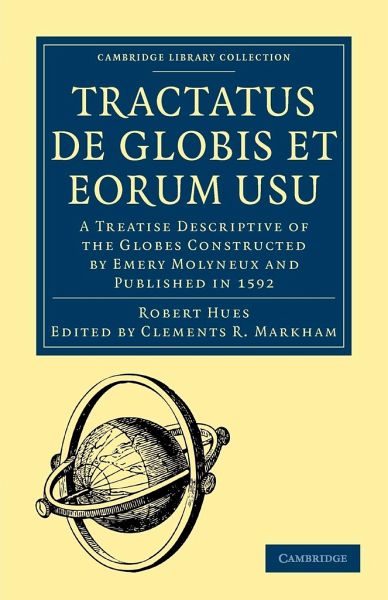
Tractatus de Globis et Eorum Usu
Versandkostenfrei!
Versandfertig in 1-2 Wochen
48,99 €
inkl. MwSt.

PAYBACK Punkte
24 °P sammeln!
The publications of the Hakluyt Society (founded in 1846) made available edited (and sometimes translated) early accounts of exploration. The first series, which ran from 1847 to 1899, consists of 100 books containing published or previously unpublished works by authors from Christopher Columbus to Sir Francis Drake, and covering voyages to the New World, to China and Japan, to Russia and to Africa and India. Robert Hues (1553-1632) was an English mathematician and geographer who published this work in 1594 to explain the use of the new terrestrial and celestial globes devised by Emery Molyneu...
The publications of the Hakluyt Society (founded in 1846) made available edited (and sometimes translated) early accounts of exploration. The first series, which ran from 1847 to 1899, consists of 100 books containing published or previously unpublished works by authors from Christopher Columbus to Sir Francis Drake, and covering voyages to the New World, to China and Japan, to Russia and to Africa and India. Robert Hues (1553-1632) was an English mathematician and geographer who published this work in 1594 to explain the use of the new terrestrial and celestial globes devised by Emery Molyneux in 1592. These were the first English manufactured globes and were popular with both navigators and students. The five parts of this book describe these globes and explain their use in calculating fundamental navigational points, providing valuable insights into their appearance and practical application in early sixteenth-century navigation.




